![]()
![]()
![]()
Use LEFT and RIGHT arrow keys to navigate between flashcards;
Use UP and DOWN arrow keys to flip the card;
H to show hint;
A reads text to speech;
25 Cards in this Set
- Front
- Back
|
Water pollution
|
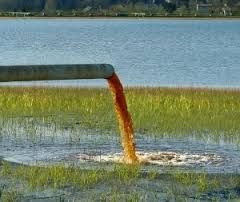
is the contamination of water bodies (e.g. lakes, rivers, oceans, aquifers and groundwater). Water pollution occurs when pollutants are directly or indirectly discharged into water bodies without adequate treatment to remove harmful compounds. |
|
|
Biological Oxygen Demand |
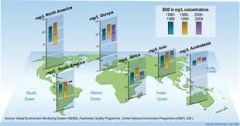
the amount of dissolved oxygen that must be present in water in order for microorganisms to decompose the organic matter in the water, used as a measure of the degree of pollution. |
|
|
Environmental Law |

a collective term describing international treaties (conventions), statutes, regulations, and common law or national legislation (where applicable) that operates to regulate the interaction of humanity and the natural environment, toward the purpose of reducing the impacts of human activity. |
|
|
Contaminants |
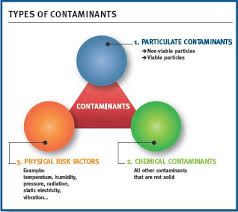
can be man-made substances produced by factories, such as DDT or toxaphene. It is the substance's long life and its ability to spread over a wide area that makes an industrial contaminant such a problem. |
|
|
Fecal Coliform |
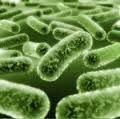
a facultatively anaerobic, rod-shaped, gram-negative, non-sporulating bacterium. |
|
|
Point Source Pollution |
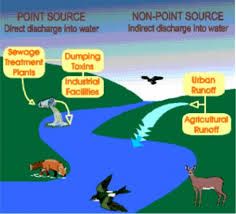
any single identifiable source of pollution from which pollutants are discharged, such as a pipe, ditch, ship or factory smokestack |
|
|
Non-Point Source Pollution |
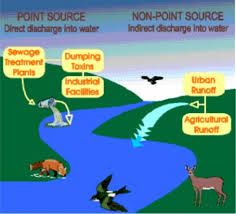
comes from many diffuse sources. NPSpollution is caused by rainfall or snowmelt moving over and through the ground |
|
|
Primary Treatment |
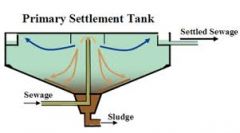
a basic wastewater treatment method that uses settling, skimming, and often chlorination to remove solids, floating materials, and pathogens from wastewater |
|
|
Secondary Treatment |
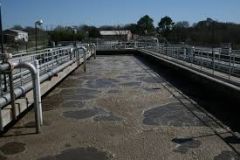
Secondary treatment is "microbial degradation," meaning human waste or other organic waste is decomposed by algae and bacteria. |
|
|
Tertiary Treatment |
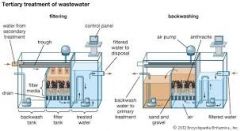
the third, or final, stages of cleaning water after it has been used for farm, domestic or industrial purposes. Primary treatment screens particulates and settles sludge in ponds. |
|
|
Effluent Discharge |
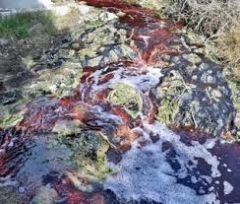
something that flows out or forth; outflow; effluence. sewage that has been treated in a septic tank or sewage treatment plant. sewage or other liquid waste that is discharged into a body of water, etc. Sludge is the dirt that remains when sewage is cleaned into effluent. |
|
|
Water Renovation and Conservation |
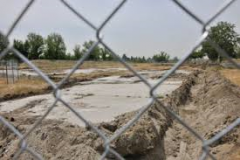
The practice of applying wastewater to the land. In some systems, treated wastewater is applied to agriculture crops, and as the water infiltrates through the soil layer, it is naturally purified. Reuse of the water is by plumping it out of the ground for municipal or agricultural use. |
|
|
Waste Water Treatment |
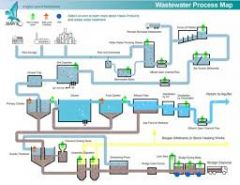
The process of treating wastewater (primary sewage) in specially designed plants that accept municipal wastewater |
|
|
Runoff |
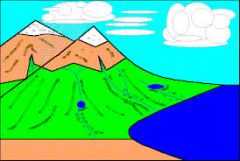
something that drains or flows off, as rain that flows off from the land in streams. |
|
|
Watershed |

An area of land that forms the drainage of a stream or river. If a drop of rain falls anywhere within a watershed, it can flow out only through that same stream or river. |
|
|
Eutrophication |
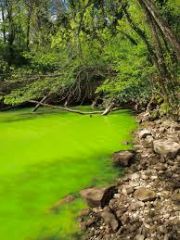
In increase in the concentration of chemical elements required for living things (for example, phosphorus). Increased nutrient loading may lead to a population explosion of photosynthetic algae and blue-green bacteria that become so thick that light cannot penetrate the water. Bacteria deprived of light beneath the surface die; as they decompose, dissolved oxygen in the lake is lowered and eventually a fish kill may result. Eutrophication of lakes caused by human-induced processes, such as nutrient-rich sewage water entering a body of water, is called cultural eutrophication. |
|
|
Dead Zone |
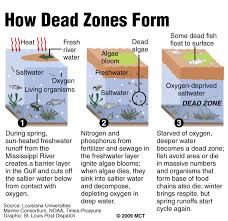
a place or period in which nothing happens or in which no life exists. |
|
|
pH |
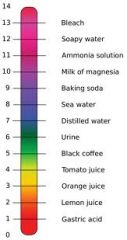
a figure expressing the acidity or alkalinity of a solution on a logarithmic scale on which 7 is neutral, lower values are more acid, and higher values more alkaline. The pH is equal to -log10 c, where c is the hydrogen ion concentration in moles per liter. |
|
|
Dissolved Oxygen |
Dissolved oxygen(DO) refers to microscopic bubbles of gaseous oxygen (O2) that are mixed in water and available to aquatic organisms for respiration—a critical process for almost all organisms. Primary sources of DO include the atmosphere and aquatic plants. |
|
|
Chlorination |
to introduce chlorine atoms into an organic compound by an addition or substitution reaction. Metallurgy. to treat (a gold ore) with chlorine gas in order that the gold may be removed as a soluble chloride. |
|
|
Aquifer |
An underground zone or body earth material from which groundwater can be obtained from a well at a useful rate. |
|
|
Hypoxia |
-deficiency in the amount of oxygen reaching the tissues.
-oxygen deficiency in a biotic environment. |
|
|
Methane Gas |
a colorless, odorless, flammable gas, CH 4, the main constituent of marsh gas and the firedamp of coal mines, obtained commercially from natural gas: the first member of the methane, or alkane, series of hydrocarbons. |
|
|
Activated Sludge |
a mass of aerated precipitated sewage added to untreated sewage to bring about purification by hastening decomposition by microorganisms |
|
|
Leachate |

Noxious, mineralized liquid capable of transporting bacterial pollutants. Produced when water infiltrates through waste material and becomes contaminated and polluted. |

